What’s Up: March 2024 Skywatching Tips from NASA
Jupiter plows through the Pleiades on March 14, a chance to spot Mercury at month’s end along with a subtle lunar eclipse, and a comet worth keeping an eye on!
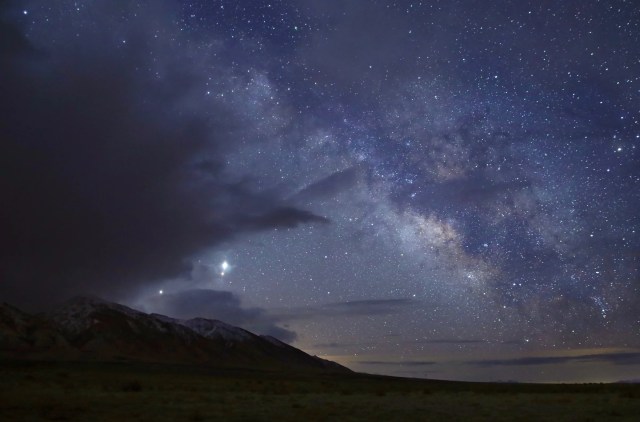
6 min read
What’s Up: March 2024 Skywatching Tips from NASA
WHAT TO LOOK FOR:
Jupiter plows through the Pleiades on March 14, a chance to spot Mercury at month’s end along with a subtle lunar eclipse, and a comet worth keeping an eye on!
March skywatching highlights:
- March 10 – New moon
- March 13 – The Moon joins Jupiter tonight in the west, following sunset. They make a great pairing through binoculars.
- March 14 – Tonight the crescent Moon moves through the Pleiades star cluster, creating a dazzling sight for skywatchers observing with binoculars.
- March 21-25 – Northern Hemisphere viewers have their best chance of the year to spot Mercury in the evening sky. Look for it shining brightly, low in the west, starting half an hour after sunset.
- March 24-25 – A subtle lunar eclipse called a penumbral eclipse will cause a slight decrease in the Moon’s brightness tonight. It’s usually difficult to see, but you might see the difference if you look before the eclipse and then at the peak. At the peak observers can sometimes see a subtle gradient in brightness across the Moon’s face.
- March 25 – Full moon
- March 25 – The full moon dims slightly during a penumbral lunar eclipse tonight, as it passes through the outer part of Earth’s shadow, the penumbra. The decrease in brightening for this type of eclipse is subtle, but you might be able to notice a slight gradient in brightness across the Moon’s face around the peak of the event.
- All month – Comet 12P/Pons-Brooks is heading toward its closest approach to the Sun on its 71-year orbit, and is bright enough to observe in telescopes and binoculars. There’s a possibility it might become just visible to the unaided eye by late March or sometime in April.
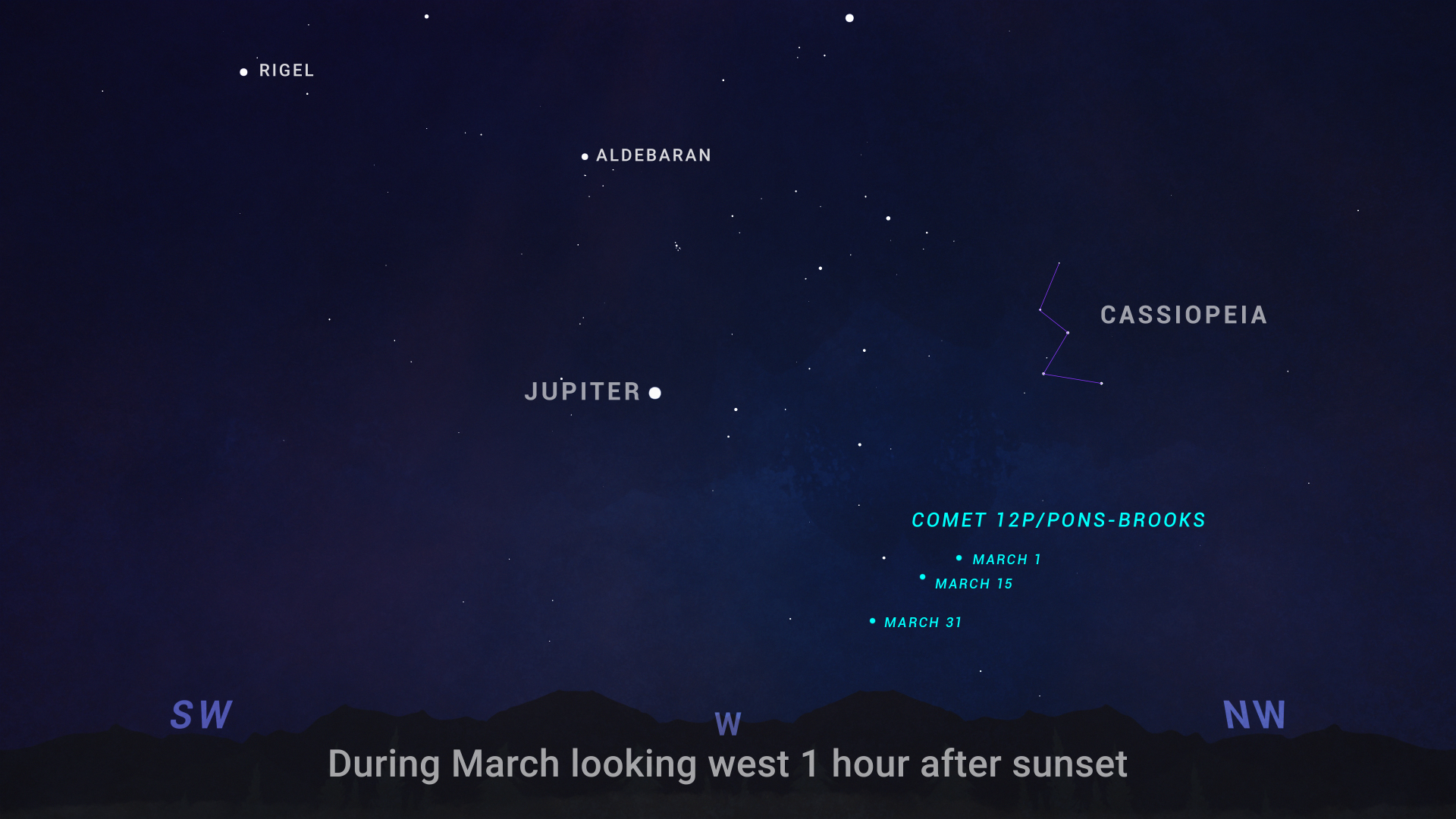
Video Transcript
Text of the current month’s video.
What’s Up for March? Some close pair-ups with the Moon, and Mercury makes an appearance, a subtle lunar eclipse, and a chance to catch a comet.
In March, you’ll find Jupiter shining brightly in the west during the early evening hours all month long. And on March 13th, it’s joined by a crescent Moon so close that the pair will be visible together through binoculars.
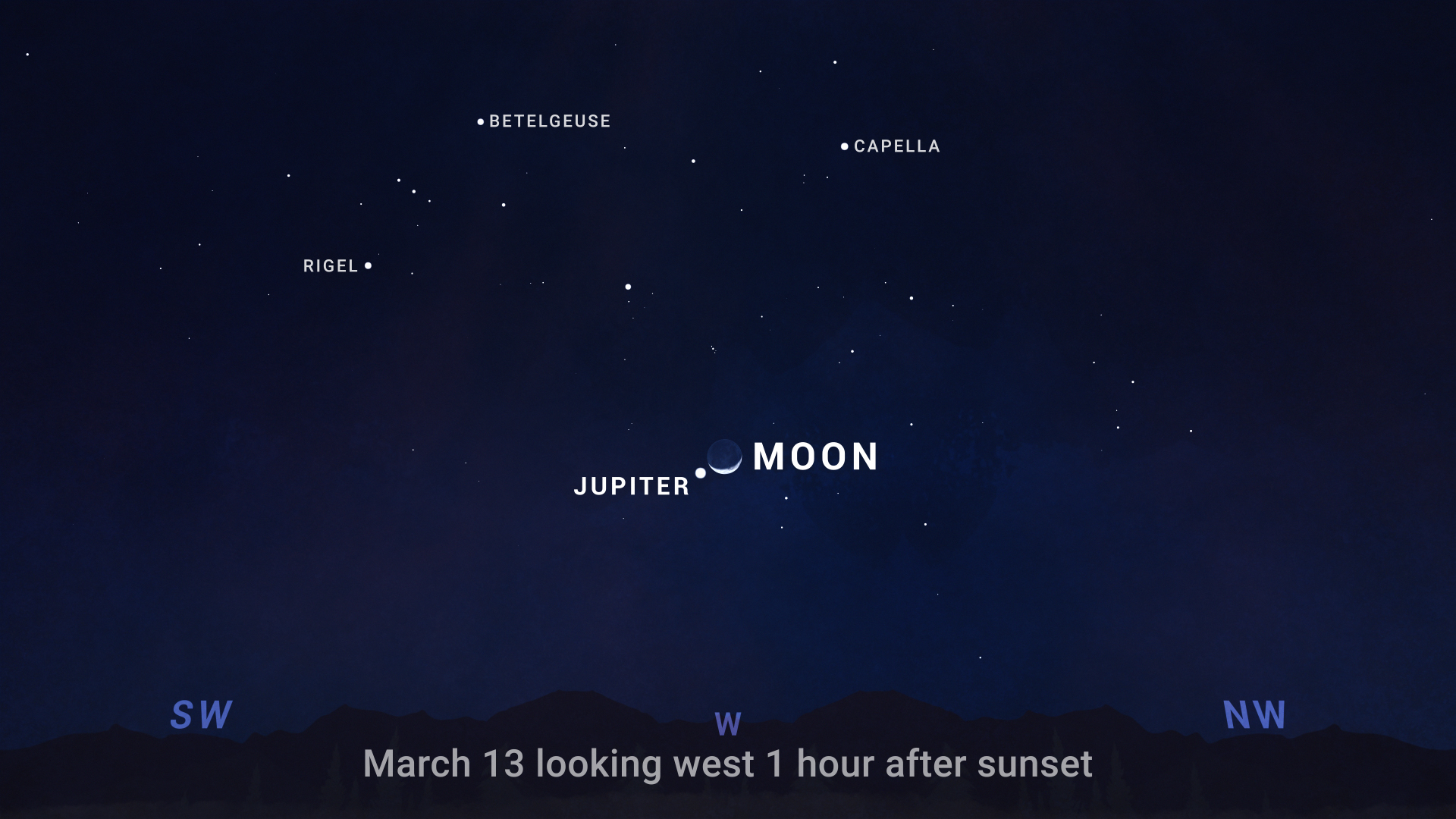
On the following evening, the Moon visits the Pleiades. This is another close pairing – with the five-day-old lunar crescent hanging right next to the bright star cluster – that will look great through a small telescope or binoculars.
Near the end of March, observers in the Northern Hemisphere will have the best opportunity of the year to catch a glimpse of Mercury in the evening sky. Look for it shining brightly low in the west following sunset.
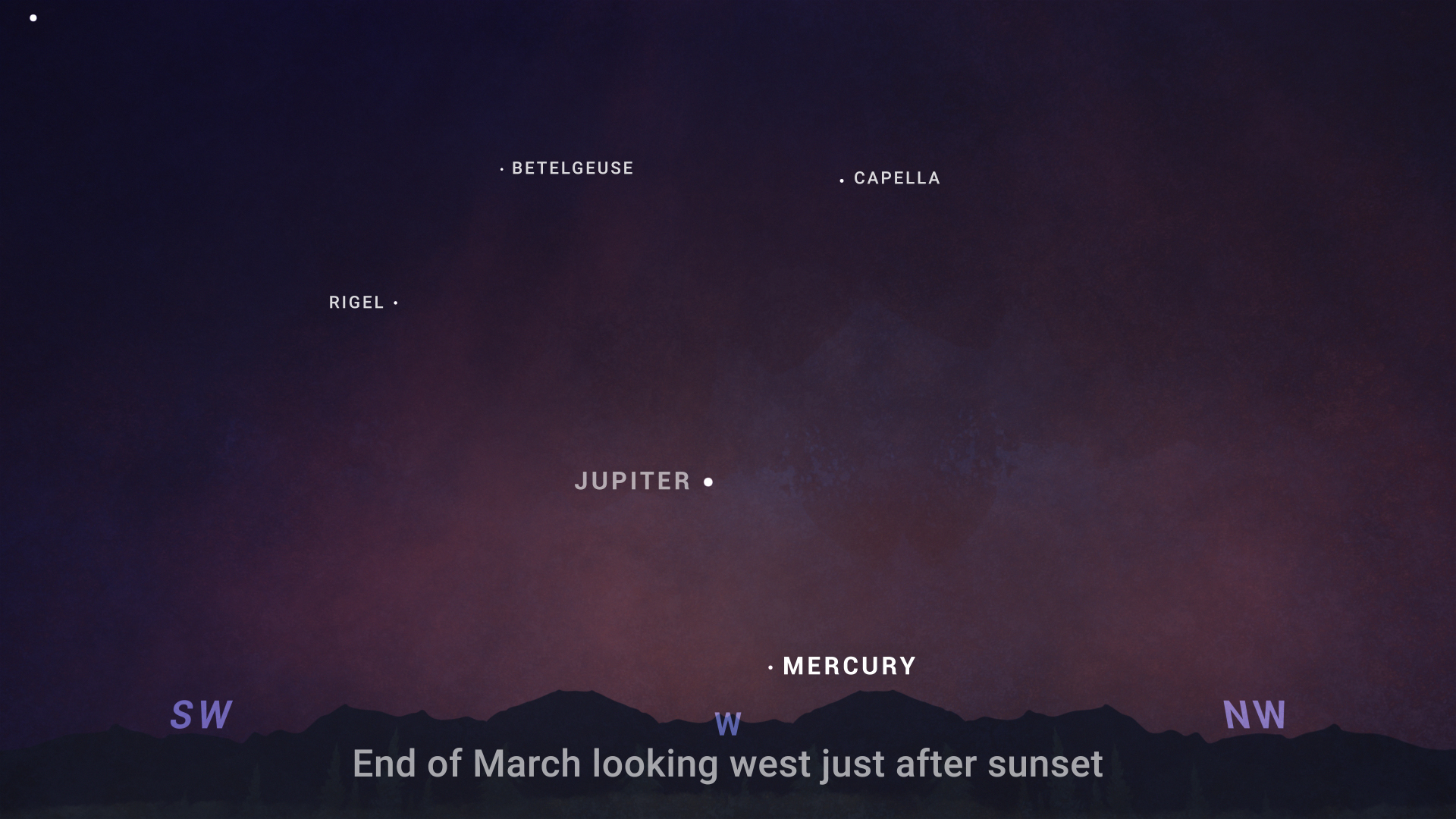
Overnight on March 24th and into the 25th, the Moon will pass through the outer part of Earth’s shadow, creating a faint lunar eclipse called a penumbral eclipse. Now, the more spectacular variety of lunar eclipses happens when the Moon passes through Earth’s inner shadow, or umbra. That’s when we see a dark “bite” taken out of the Moon, or in the case of a total lunar eclipse, a reddish, so-called “blood moon.” Penumbral eclipses cause only a slight dimming of the Moon’s brightness, so if you’re not looking for it, you might not know there was an eclipse happening. But if you glance at the Moon early in the night, and then later, around the peak of the eclipse, you might notice the difference in brightness.
Even faint lunar eclipses like this one are always accompanied by a solar eclipse either a couple of weeks before or after. And on April 8th, a total solar eclipse will sweep across the U.S. (We’ll tell you more about that in next month’s video.)
There’s a comet making its way into the inner solar system that’s already observable with a telescope, and might start to become visible to the unaided eye by late March or in April. It’s a mountain of rock, dust, and ice several miles wide named 12P/Pons-Brooks.
It has a stretched-out, 71-year-long orbit that carries it as far from the Sun as the orbit of Neptune and nearly as close as the orbit of Venus. Fortunately, because this orbit is tilted, it doesn’t cross our planet’s path, so there’s no chance of a collision.
Comet 12P has been observed on several of its previous appearances going back hundreds of years, and one thing it’s known for is its occasional outbursts. Sometimes this comet suddenly brightens by quite bit, due to bursts of gas and dust being released from beneath its surface. If this happens in the March-April timeframe as the comet nears the Sun, it could become bright enough to observe with the eye alone.
But even without additional brightening from outbursts, the comet is predicted to peak at a brightness that should make it easy to see with binoculars, and possibly just naked-eye visible under dark skies by the end of March.
Now, comets are notoriously unpredictable, so it’s hard to know for sure how bright Pons-Brooks will get as it nears the Sun, but it’s certainly worth a look. You can find it low in the west-northwest part of the sky at the end of evening twilight.
Comets, along with asteroids, are leftover pieces of the materials that formed the Sun and planets. So catch a comet and glimpse one of the building blocks of our solar system with your own eyes.
Here are the phases of the Moon for March.
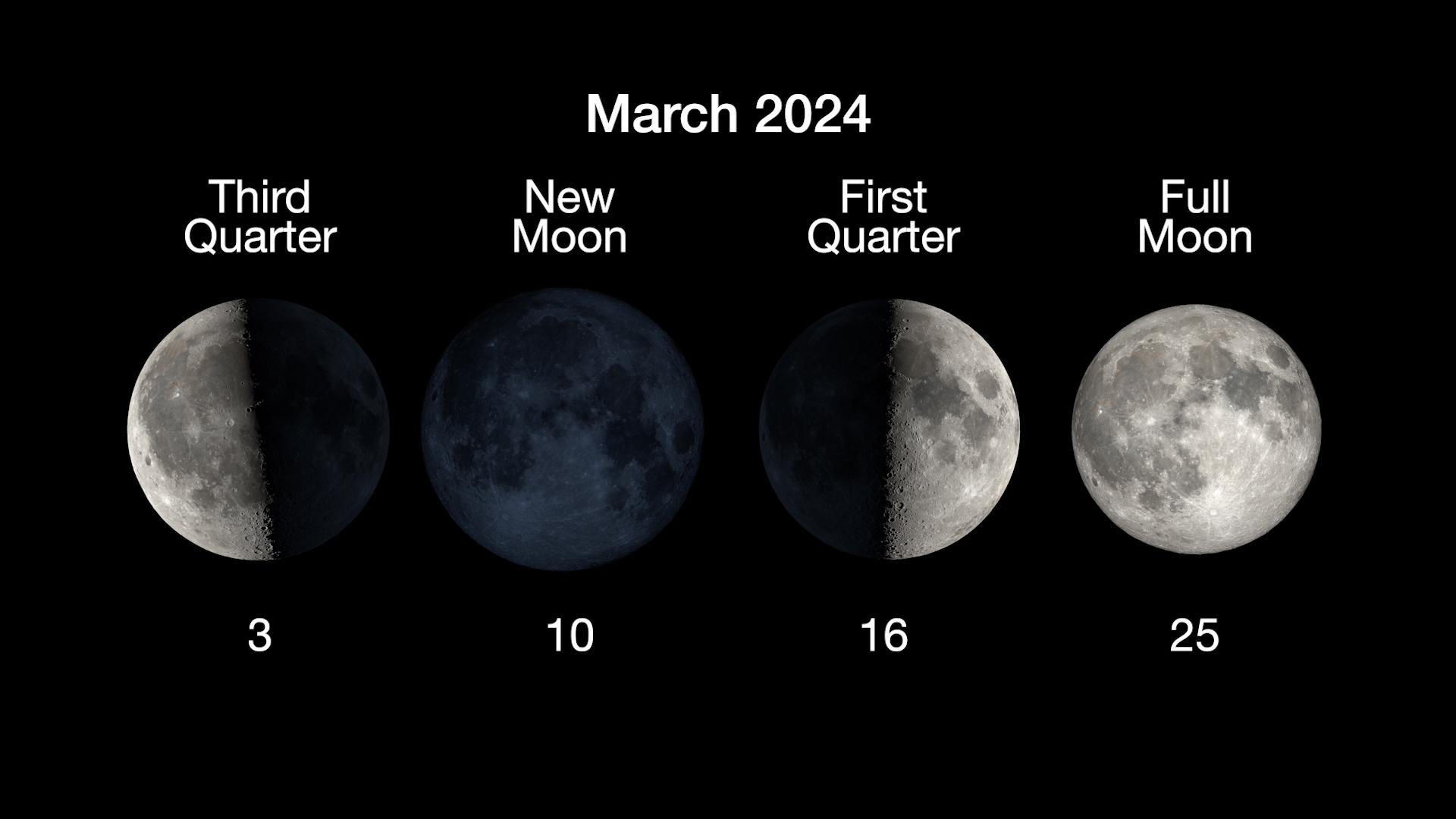
Stay up to date on NASA’s missions exploring the solar system and beyond at science.nasa.gov. I’m Preston Dyches from NASA’s Jet Propulsion Laboratory, and that’s What’s Up for this month.
Skywatching Resources
About the What’s Up production team
“What’s Up” is NASA’s longest running web video series. It had its first episode in April 2007 with original host Jane Houston Jones. Today, Preston Dyches, Christopher Harris, and Lisa Poje are the science communicators and space enthusiasts who produce this monthly video series at NASA’s Jet Propulsion Laboratory. Additional astronomy subject matter guidance is provided by JPL’s Bill Dunford, Gary Spiers, Lyle Tavernier, and GSFC’s Molly Wasser.
What's Your Reaction?









































